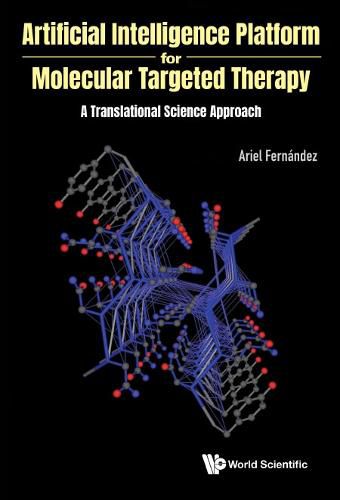Readings Newsletter
Become a Readings Member to make your shopping experience even easier.
Sign in or sign up for free!
You’re not far away from qualifying for FREE standard shipping within Australia
You’ve qualified for FREE standard shipping within Australia
The cart is loading…






In the era of big biomedical data, there are many ways in which artificial intelligence (AI) is likely to broaden the technological base of the pharmaceutical industry. Cheminformatic applications of AI involving the parsing of chemical space are already being implemented to infer compound properties and activity. By contrast, dynamic aspects of the design of drug/target interfaces have received little attention due to the inherent difficulties in dealing with physical phenomena that often do not conform to simplifying views.This book focuses precisely on dynamic drug/target interfaces and argues that the true game change in pharmaceutical discovery will come as AI is enabled to solve core problems in molecular biophysics that are intimately related to rational drug design and drug discovery.Here are a few examples to convey the flavor of our quest: How do we therapeutically impair a dysfunctional protein with unknown structure or regulation but known to be a culprit of disease? In regards to SARS-CoV-2, what is the structural impact of a dominant mutation?, how does the structure change translate into a fitness advantage?, what new therapeutic opportunity arises? How do we extend molecular dynamics simulations to realistic timescales, to capture the rare events associated with drug targeting in vivo? How do we control specificity in drug design to selectively remove side effects? This is the type of problems, directly related to the understanding of drug/target interfaces, that the book squarely addresses by leveraging a comprehensive AI-empowered approach.
$9.00 standard shipping within Australia
FREE standard shipping within Australia for orders over $100.00
Express & International shipping calculated at checkout
In the era of big biomedical data, there are many ways in which artificial intelligence (AI) is likely to broaden the technological base of the pharmaceutical industry. Cheminformatic applications of AI involving the parsing of chemical space are already being implemented to infer compound properties and activity. By contrast, dynamic aspects of the design of drug/target interfaces have received little attention due to the inherent difficulties in dealing with physical phenomena that often do not conform to simplifying views.This book focuses precisely on dynamic drug/target interfaces and argues that the true game change in pharmaceutical discovery will come as AI is enabled to solve core problems in molecular biophysics that are intimately related to rational drug design and drug discovery.Here are a few examples to convey the flavor of our quest: How do we therapeutically impair a dysfunctional protein with unknown structure or regulation but known to be a culprit of disease? In regards to SARS-CoV-2, what is the structural impact of a dominant mutation?, how does the structure change translate into a fitness advantage?, what new therapeutic opportunity arises? How do we extend molecular dynamics simulations to realistic timescales, to capture the rare events associated with drug targeting in vivo? How do we control specificity in drug design to selectively remove side effects? This is the type of problems, directly related to the understanding of drug/target interfaces, that the book squarely addresses by leveraging a comprehensive AI-empowered approach.